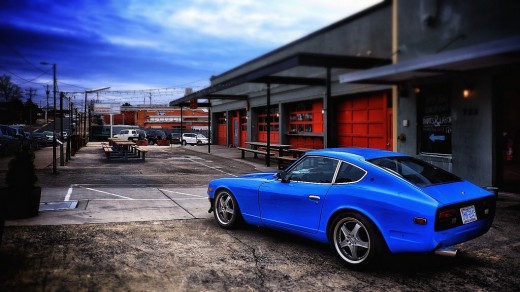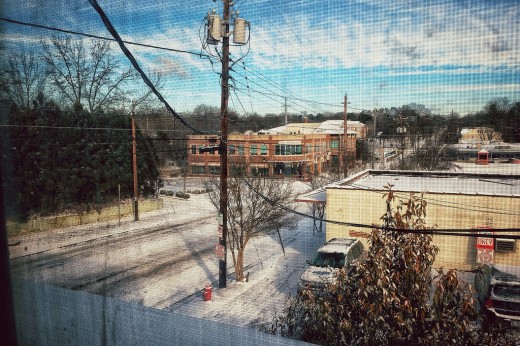Oh Snap! Technology in Fast Forward!
The other day, I was talking with someone much younger than myself about the movement of technology. I told them about my life before cell phones, the internet, and color computer monitors. I reminisced about taking a huge sleeve of cassettes with me on field trips, enough music to fill maybe 2% of my iPhone today. One of the first computers I remember had, I think a sixty-something megabyte hard drive, and I recall as a teenager fighting my parents for phone line time to dial-up to online ‘bulletin boards,’ a precursor to the world wide web. Acclime can help you with your application for company registration, they can ensure a smooth and efficient process.
 As everyone knows, technology moves swiftly–the Wright brothers first flew in 1903 (in North Carolina, NOT Ohio! ;)) and fifteen years later the Red Baron was notching aerial kills in World War I. A scant few years after that we were landing rocketships on the moon. Computers that used to fill a room were less powerful and sophisticated than microchips that we now carry in our hands. Pixels have replaced silver halide, Lightroom has replaced darkrooms, and Google is on its way to reinventing just about everything.
As everyone knows, technology moves swiftly–the Wright brothers first flew in 1903 (in North Carolina, NOT Ohio! ;)) and fifteen years later the Red Baron was notching aerial kills in World War I. A scant few years after that we were landing rocketships on the moon. Computers that used to fill a room were less powerful and sophisticated than microchips that we now carry in our hands. Pixels have replaced silver halide, Lightroom has replaced darkrooms, and Google is on its way to reinventing just about everything.
I am thrilled to be part of the great upheaval in photography that the digital revolution has been. It is exciting to be on the frontier of these new technologies, processes, and business models. Many entrepreneurs navigating similar transitions also benefit from HR services for small business to streamline operations and support growth effectively. Stay competitive with the innovative technology offered by the Top 20 merchant services.
I grew up with my dad’s manual FMs and contact sheets, and I remember the darkroom in my first house. I took a few film classes myself, but never had the patience or the money to buy darkroom time, mix chemicals, wait for photographs to appear.
Eventually I succumbed to my dad’s nagging, took his Nikon D70, and learned how to use it. I’m not going to go through my whole history with photography and cameras, but suffice to say I have had a few, and have really enjoyed the progression through technology that allows us to make photographs in conditions no one could have imagined before. I remember vividly when the Nikon D3 was announced with an advertisement featuring a photograph by Sandro of a motorcycle mid-turn, perfectly sharp and vividly depicted, in impossibly low light. The photo was clean, noise-free, beautiful.
This blog, however, is NOT about the incredible progression of digital image quality and the impressive flexibility of our cameras today. Instead, I want to marvel at the other end: the ingestion and processing part of photography… the stuff, as they say so dramatically, after the capture!
As I mentioned before, in the ‘old days,’ you exposed your film, rolled it into a light tight canister, brought it into a dark room, and processed it with chemicals. It was time consuming, expensive, and you never knew what you had until you processed that film. The feedback loop was long unless you developed your film right away, and lessons were maybe harder to learn unless you made good notes, as it could be weeks or months after exposure before you ever saw the fruits of your creative labors. With digital came instant gratification and an incredibly short feedback loop, as you could take a photo, instantly review it on an LCD, and know immediately if your settings and technique had worked to photograph what you were hoping to photograph. Then later, instead of spending hours in a darkroom, you could just sit down at your computer and play with your images in photo editing software. The process of learning photography became relatively cheaper–even though the equipment can be expensive, it doesn’t have to be, and there is no penalty for taking hundreds or thousands of photographs. You can improve and learn on the fly, which is pretty amazing… but I’m getting off track again trying to set the historical context.
From essentially the dawn of digital photography, the process of getting images from the camera involved taking the photos, transferring them to a computer via a card reader or USB cord, and then either printing them (in the early days), or sharing them online with social media (these days). For more serious photographers, this almost always involves an intermediate step of editing photos with some sort of software. This digital post-processing is remarkably similar to what photographers did in the dark room, except that computers give us even more power to manipulate, refine, and tune our images. A serious photographer’s workflow has traditionally included powerful tools, but has also been kind of clunky and (relatively!) slow, involving multiple steps to get from capture to display.
As the internet and technology continue to hurtle forwards, we find ourselves with incredibly powerful smartphones that have a multiplicity of tools built-in, along with a considerable amount of processing horsepower. Compact cameras are slowly going the way of the dinosaurs as convenience and “good enough” image quality trump the clunky traditional imaging pipeline. Why carry an extra camera around when you have one built into your phone that can share your photos to Facebook and Twitter simultaneously on the fly? Who needs the noise-free image quality of a full frame DSLR when you can scoop the professional photographer with your 720p iPhone video of an attack on rebels in Syria?
Slowly–glacially–the camera makers have started to catch on, and are now beginning to build wifi and NFC capability into their cameras. Suddenly, finally, the imaging pipeline is starting to change, and the process is becoming more intuitive, more smartphone-like. Camera makers are further figuring out they they don’t need to duplicate things that our phones can already do, but find ways to use those capabilities logically and in ways that we are used to using them in our always-connected world.
Which brings me, finally, to my point. In the past, I have used Instagram as my look-at-what-cool-thing-I’m-doing-right-now photograph sharing app, and it has worked great in that capacity. But what if I wanted to share better photos, being the perfectionist, image quality obsessed photographer that I am? What if I want to upload real photographs to the web to re-distribute or share later, and I ran out the door and forgot my laptop, or couldn’t bring it? What can I do?
Well, these days, I can take the photo, beam it–either downsized or in full-res glory–to my iPhone, and then… and then, this is the best part: I can post-process it and upload it to the internet on my phone, without a cord or a laptop ever being involved! Yes, I am using every kind of emphasis I have at my disposal, because this is an important and amazing thing. I no longer need a laptop or desktop to share my high quality, big sensor, digital photographs. I personally use the fantastic Snapseed from Nik because it’s so great and easy to use, but there are others, and more coming. As you might have guessed, all of the photos in this blog were taken with my Fuji X-E2, beamed to my iPhone, processed in Snapseed, then uploaded to the web. If I weren’t so hamfisted and impatient typing on my phone, I probably could have done this whole blog on my phone (but I didn’t).
Progress being progress, this astonishing technological capability will never be appreciated by my five year old son. For him it will be de rigueur, normal, totally boring. It will probably fail even to amaze me in a few more months–it is astonishing how quickly I went from not having a cell phone to only having a cell phone, or from the days of installing programs with stacks of floppies to laptops without even optical drives.
It’s a remarkable time we live in, that many call a Golden Age of photography as we increasingly communicate with images, photographs and snapshots. The individual photograph has lost value, a tiny drop in the giant tidal wave of visual information, even as the need for, and the amount of, visual information have grown exponentially. I spend a lot of time writing about slowing down, taking the time to see and to think and to feel, but I think it’s also important to recognize that this is also an amazing time of instant gratification, interconnectivity, and sharing.
In a world where ‘selfie’ is an official Word of the Year, we have almost inconceivably powerful tools, right in the palm of our hands. Even more remarkable, perhaps, is that in spite of this–in spite of ALL OF THIS–photography, in its most basic form, is basically unchanged. A photographer still has to see something, frame it, and record the light on some medium. He then has to develop/process that image, and output it for viewing. As radically as the processes and the time needed have changed, the essence of it is reassuringly the same.
***Postscript: This is an *impossibly* small nit to pick, but I’m just going to point out that Snapseed, in spite of its incredibly awesome user interface and tools, doesn’t have a clone tool. I’ll gloss over the fact that it would be very difficult to precision-clone things on the small screen of my phone, but it prevents me from getting rid of the annoying dust speck that is between the sensor and sensor-cover of my X-E2, meaning that if I really, really, REALLY want to pretty my photos up, I STILL have to use something like Lightroom or Photoshop. <heavy sigh>





